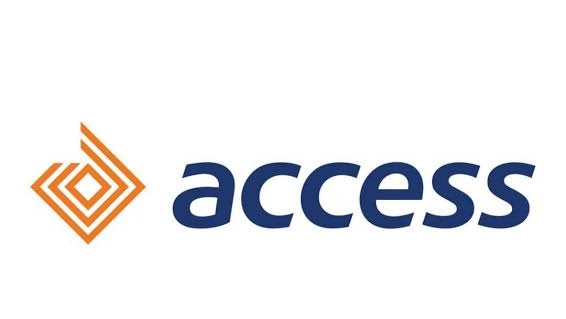- Search for topics or project materials by department. 2015/2016 Research Work 46 ARCHITECTURE 12 Accounting 158 Agriculture & Farming 21 Arts and Crafts 25 BIOCHEMISTRY 30 Bank & Finance 45 Biology 1 Business Administration 162 CHEMICAL ENGINEERING 18 Career People 18 Computer Science 0 Computer Science 244 Computer Science E-books 0 ECONOMICS 117 EDUCATION 78 ELECTRICAL ELECTRONICS 88 ENGLISH 14 ESTATE MANAGEMENT 16 Electrical Electronics 0 Food 19 Forum 0 General Topics 4 HOSPITALITY & TOURISM 123 Import & Export 10 Land Survey & Geoinformatics 68 Law 7 MARKETING 37 Marketing & Advertising 11 Mass communication 155 Masters and Doctorate 118 Mechanical Engineering books 0 Media & Publishing 6 Medical Science E-books 0 Micro Biology 4 Micro Biology 8 OTHERS 0 Oil & Gas 11 Online & Internet 36 POLITICAL SCIENCE 0 Program / Source Code 0 Programming E-books 0 Public Administration 25 Real Estate 20 Religious E-boooks 0 Retail 20 STATISTICS 17 Science Laboratory 0 Science laboratory 56 Sermons & Prophecies Ebook 0 Services 19 Small Scale Manufacturing 21 System Applications 0 Technology 30
TRADITIONAL MEDIA OF COMMUNICATION AS TOOLS FOR EFFECTIVE RURAL DEVELOPMENT
TRADITIONAL MEDIA OF COMMUNICATION AS TOOLS FOR EFFECTIVE RURAL DEVELOPMENTABSTRACT
The study is a critical examination of the role of mass media in Traditional media of communication as tools for effective rural development. Notwithstanding the various modern means of communication such as RADIO, INTERNET, TELEVISION, NEWSPAPERS, MAGAZINES, etc. The rural means of communication is still the epitome for rural development. These traditional medium of communication includes the following Ekwe, Ikoro, Smoke signals, Open market, Age groups, palm fronds, The town crier oja etc.
However, both primary and secondary data will be used in gathering information for the study. The secondary data will come as a review of documented materials, while the primary data will be obtained with the help of questionnaire and oral interview, and will be administered to the ruralites with the help of the researcher, who will help the uneducated ones to fill in the boxes by explaining the questions to them.
A total of 382 questionnaires will be distributed precisely to the residents of Iwollo Oghe community.
The data collected will be tabulated and analyzed using percentages.
The three hypotheses formulated will be tested using chiSquare method respectively
The findings of the study will show among others that the traditional medium of communication is a tool for an effective rural development.
The study will also recommend that the modern media should be used in conjunction with the traditional media of communication which people are familiar with; this will make for participatory communication to enhance national development.
TABLE OF CONTENTS
Title page i
Approval page ii
Dedication iii
Acknowledgement iv
Abstract vi
Table of contents viii
CHAPTER ONE INTRODUCTION 1
1.1 BACKGROUND OF THE STUDY 1
1.2 STATEMENT OF THE RESEARCH PROBLEM 16
1.3 OBJECTIVE OF THE STUDY 18
1.4 SIGNIFICANCE OF THE STUDY 18
1.5 SCOPE DELIMITATION OF THE STUDY 19
1.6 RESEARCH QUESTION 19
1.7 RESEARCH HYPOTHESES 20
1.8 ASSUMPTION OF THE STUDY 21
1.9 CONCEPTUAL AND OPERATIONAL
DEFINITION OF TERMS 22
1.10LIMITATION OF THE STUDY. 24
CHAPTER TWO REVIEW OF THE LITERATURE
2.1 SOURCES OF LITERATURE REVIEW 26
2.2 REVEW OF RELEVANT LITERATURE 29
2.3 THEORITICAL FRAME WORK 38
2.4 SUMMARY OF THE LITERATURE REVIEW 39
CHAPTER THREE RESEARCH METHODOLOGY
3.1 RESEARCH DESIGN 43
3.2 AREA OF THE STUDY 44
3.3 POPULATION OF THE STUDY 44
3.4 RESEARCH SAMPLE AND SAMPLING TECHNIQUES 45
3.5 INSTRUMENT USED FOR DATA COLLECTION 48
3.6 VALIDITY OF THE INSTRUMENT 48
3.7 METHOD OF COLLECTING DATA 49
3.8 METHOD OF DATA ANALYSIS 49
CHAPTER FOUR DATA PRESENTATION, ANALYSIS AND RESULTS
4.1 DATA ANALYSIS AND PRESENTATION 52
4.2 HYPOTHESES TESTING 65
4.3 DISCLOSURE OF FINDING 72
CHAPTER FIVE
5.1 SUMMARY 75
5.2 RECOMMENDATION 77
5.3 CONCLUSION 80
APPENDIX I 82
APPENDIX II 83
BIBLIOGRAPHY
View Related Projects
An Appraisal of Nigerian Newspapers Coverage of Women’s Participation in 2007 General Elections
al of Nigerian Newspapers Coverage of Womens Participation in 2007 General ElectionsThe professionalism of media is c...
Continue readingPROGRAMME PATRONAGE OF RADIO BENUE, MAKURDI: CASE STUDY OF MAKURDI
INTRODUTION1.1 BACKGROUD TO THE STUDY The mass media perform a lot of key functions in this society...
Continue readingTHE IMPACT OF ICT ON NEWS PROCESSING, REPORTING AND DISSEMINATION ON BROADCAST STATION
ABSTRACTInformation and communication has swept the world with powerful force affecting the society. Supported in its ...
Continue reading

